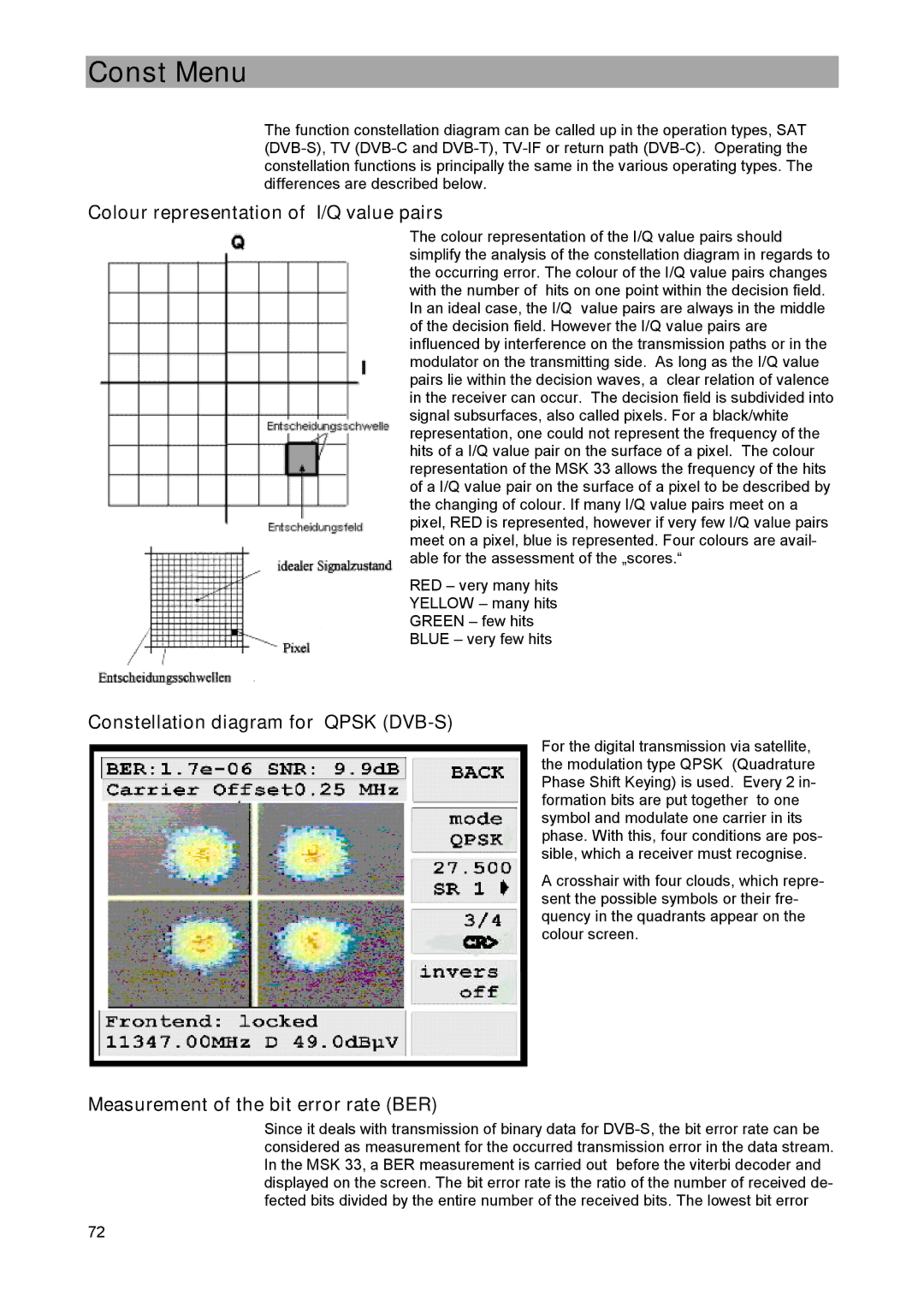
Const Menu
The function constellation diagram can be called up in the operation types, SAT
Colour representation of I/Q value pairs
The colour representation of the I/Q value pairs should simplify the analysis of the constellation diagram in regards to the occurring error. The colour of the I/Q value pairs changes with the number of hits on one point within the decision field. In an ideal case, the I/Q value pairs are always in the middle of the decision field. However the I/Q value pairs are influenced by interference on the transmission paths or in the modulator on the transmitting side. As long as the I/Q value pairs lie within the decision waves, a clear relation of valence in the receiver can occur. The decision field is subdivided into signal subsurfaces, also called pixels. For a black/white representation, one could not represent the frequency of the hits of a I/Q value pair on the surface of a pixel. The colour representation of the MSK 33 allows the frequency of the hits of a I/Q value pair on the surface of a pixel to be described by the changing of colour. If many I/Q value pairs meet on a pixel, RED is represented, however if very few I/Q value pairs meet on a pixel, blue is represented. Four colours are avail- able for the assessment of the „scores.“
RED – very many hits YELLOW – many hits GREEN – few hits BLUE – very few hits
Constellation diagram for QPSK (DVB-S)
For the digital transmission via satellite, the modulation type QPSK (Quadrature Phase Shift Keying) is used. Every 2 in- formation bits are put together to one symbol and modulate one carrier in its phase. With this, four conditions are pos- sible, which a receiver must recognise.
A crosshair with four clouds, which repre- sent the possible symbols or their fre- quency in the quadrants appear on the colour screen.
Measurement of the bit error rate (BER)
Since it deals with transmission of binary data for
72
